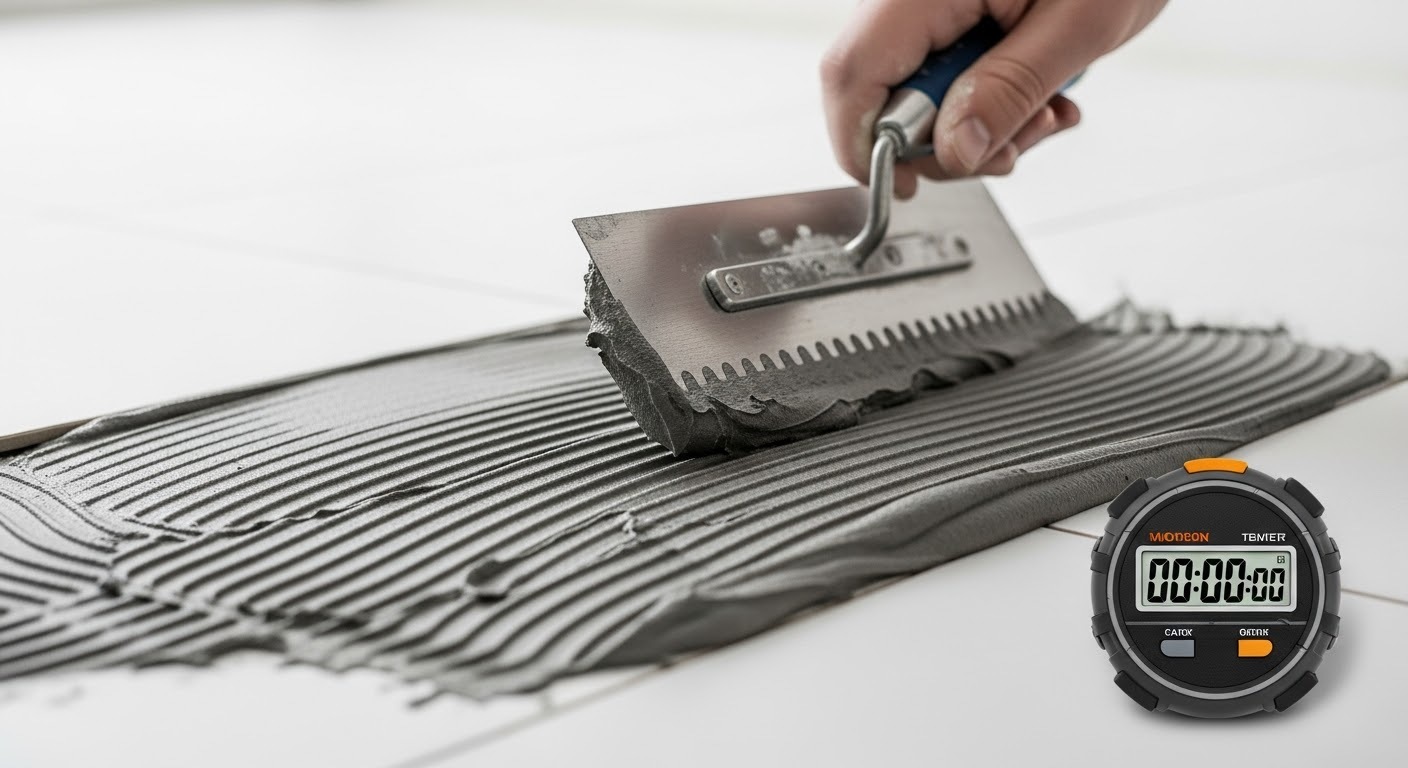The Influence of Cellulose Ether Dosage on the Consistency of Cement-Based Tile Adhesive
Release time:
2025-10-17
The dosage of cellulose ether is one of the core factors regulating the consistency of cement-based tile adhesive. Within a reasonable dosage range, there is a significant positive correlation between the two—specifically, as the dosage of cellulose ether increases, the consistency of the tile adhesive (characterized by increased paste viscosity, enhanced anti-sagging performance, and reduced fluidity) generally increases. The specific influence mechanism, laws, and practical boundary conditions are as follows:
1. Core Influence Mechanism: From Molecular Interaction to Macroscopic Consistency Change
Cellulose ether alters the consistency of tile adhesive through a threefold effect of "molecular hydration, spatial network formation, and particle adsorption," and the dosage directly determines the intensity of this effect:
-
Molecular Hydration and Viscosity Enhancement
Cellulose ether is a hydrophilic long-chain polymer. When dissolved in water, the hydroxyl groups (-OH) and ether bonds (-O-) on its molecular chains form hydrogen bonds with water molecules, causing the molecular chains to unfold from a curled state into a "linear network structure." As the dosage increases, the number of polymer chains per unit volume increases, making the network structure denser. This directly raises the base viscosity of the aqueous solution (the liquid phase in the tile adhesive), thereby increasing the overall paste consistency. -
Spatial Network and Particle Restraint
The unfolded cellulose ether molecular chains form a "three-dimensional spatial network," in which cement particles and aggregate particles become encapsulated or trapped in the network pores. A higher dosage leads to a denser network, which exerts stronger restraint on the free movement of particles. This increases the flow resistance of the paste and consequently raises its consistency. -
Particle Adsorption and Interaction
Some cellulose ether molecules adsorb onto the surface of cement particles, forming a "polymer adsorption film." On one hand, this film increases the "effective volume" of cement particles, reducing the free gaps between them; on the other hand, the adsorption films on the surfaces of adjacent particles interact through intermolecular forces, further enhancing particle agglomeration. Ultimately, this manifests as an increase in paste consistency.
2. Dosage Influence Law: The Boundary and Critical Point of "Positive Correlation"
The influence of cellulose ether on consistency is not infinitely linear; instead, there exists an "effective action range" and a "saturation critical point," which must be controlled based on practical applications:
-
Low Dosage Stage (usually < 0.05%, based on cement mass)
At this stage, the number of cellulose ether molecules is insufficient. They can only undergo partial hydration and form a sparse network, resulting in a weak effect on consistency improvement. The tile adhesive may still exhibit excessive fluidity and poor anti-sagging performance (e.g., tiles sliding down when pasted on walls). -
Suitable Dosage Stage (usually 0.05%–0.5%, with a mainstream range of 0.1%–0.3%)
In this stage, there is an approximately linear positive correlation between dosage and consistency. For every 0.05%–0.1% increase in dosage, the consistency (inferred indirectly via the "fluidity" index, where a lower fluidity value indicates higher consistency) typically increases by 10%–20% (specific values vary slightly depending on the type of cellulose ether and cement). For example: at a dosage of 0.1%, the fluidity of the tile adhesive may be 180mm (meeting the fluidity requirements for floor construction); when the dosage increases to 0.2%, the fluidity may decrease to 140mm (meeting the anti-sagging needs for wall construction). This is the most commonly used adjustment range in practical engineering. -
High Dosage Stage (usually > 0.5%)
When the dosage exceeds the "saturation critical point," the cellulose ether molecules have already formed an extremely dense spatial network. Excess molecules can hardly unfold or adsorb further, so the increase in consistency slows down significantly (or even stabilizes). Meanwhile, an excessively high dosage causes the paste to become "overly thick," leading to difficulties in mixing, poor workability during troweling, and air bubbles easily remaining at the bonding interface between tiles and the substrate. These issues ultimately compromise construction quality and bonding strength.
3. Key Influencing Factors in Practical Application (Requiring Synergistic Adjustment with Dosage)
In different scenarios, the dosage must be adjusted according to specific needs to avoid focusing solely on consistency while neglecting other properties:
-
Difference in Construction Positions
- Wall tile pasting: Higher consistency (for anti-sagging) is required, so the dosage is usually set at 0.2%–0.3% to prevent tiles from sliding down due to their own weight.
- Floor tile pasting: Moderate fluidity (for easy and smooth troweling) is needed, so the dosage can be controlled at 0.1%–0.2% to avoid uneven troweling caused by excessive consistency.
-
Difference in Cellulose Ether Types
Cellulose ethers with different degrees of substitution and polymerization (e.g., hydroxypropyl methylcellulose, HPMC; hydroxyethyl cellulose, HEC) vary in thickening efficiency. For instance, HPMC with a high degree of polymerization exhibits stronger thickening effects at the same dosage. Thus, the dosage must be adjusted based on the product’s characteristics. -
Environmental Factors
- High-temperature environments: Rapid water evaporation can easily thicken the paste, so the dosage can be appropriately reduced (e.g., from 0.2% to 0.15%).
- Low-temperature environments: The rate of molecular hydration slows down, leading to delayed consistency development. In this case, the dosage can be slightly increased (e.g., from 0.2% to 0.25%).
Conclusion
By regulating the degree of molecular hydration, the density of the spatial network, and particle adsorption, the dosage of cellulose ether directly determines the consistency of cement-based tile adhesive. Within the mainstream dosage range of 0.05%–0.5%, the two show a positive correlation, and the dosage can be adjusted to match the construction requirements of walls (high consistency for anti-sagging) or floors (moderate consistency for fluidity retention). However, it is important to note that a higher dosage is not always better—exceeding 0.5% can lead to reduced workability. Additionally, the dosage must be comprehensively optimized in conjunction with the type of cellulose ether and environmental conditions.
Related News
2025-10-01
2025-09-18







